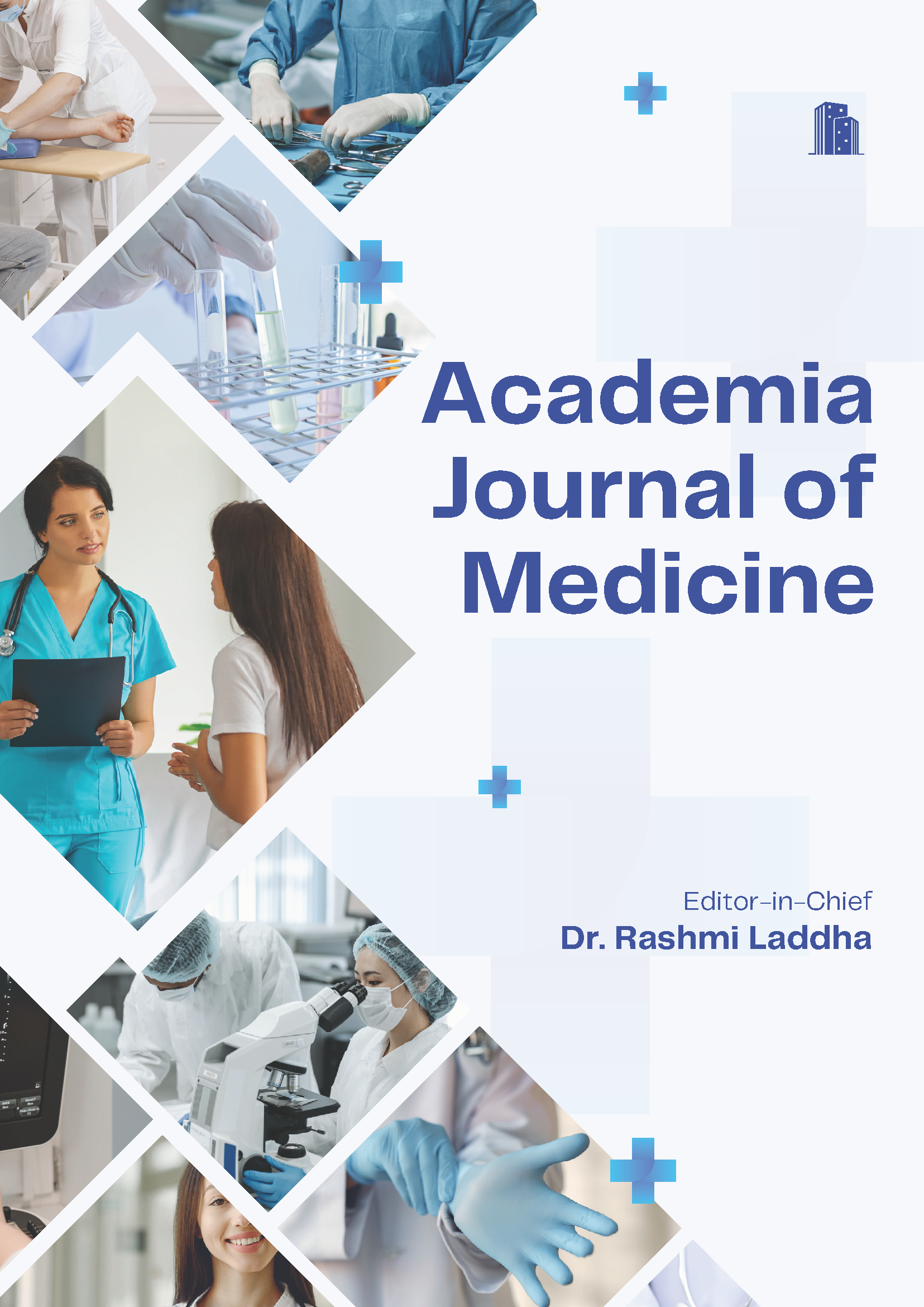Thyroid Function Abnormalities in Critically Ill Patients
Keywords:
Thyroid, Anti-thyroid drugs, Critically ill patientsAbstract
Background: To study the alterations in thyroid hormone levels in critically ill patients. Subjects and Methods: Fasting venous blood samples were collected on admission to ICU from all critically ill patients and were subjected for thyroid hormone analysis by VIDAS-ELISA. They were also be evaluated for body temperature, blood pressure, pulse rate, respiratory rate, and impairment of consciousness on the Glasgow coma scale. Arterial blood gas analysis, complete blood count, liver function test, renal function test was interpreted, and the APACHE II score was calculated. Course and the outcome of these patients were followed in the hospital. Result: Maximum patient belong to 41-50 years age group (n=34, 34%) Maximum patients were male (n=69, 69%) and rest were females (n=31, 31%). 42 (42%) patients required Ventilator assistance. The mean APACHE-II score was significantly higher among non-survivors compared with survivors (25.52 ± 6.84 vs. 14.06 ± 5.71, P < 0.01). The mean value of TSH was 3.27±6.91. The mean value of FT3 was 3.42±0.36. The mean value of FT4 was 14.79±1.17. A total of 22 patients (22%) succumbed to their illness during ICU admission. The mean level of both FT3 and FT4 were lower in non-survivors (2.98, 13.39) as compared to survivors (3.82,15.71). The mean level of TSH was lower in non-survivors (2.63) as compared to survivors (4.07). Conclusion: FT3 and FT4 was lesser in non-survivors as compared to survivors with significant difference. Although TSH level was lower in non-survivors as compared to survivors, but there was not statistically significant difference.FT3 and FT4 were the best independent predictors of ICU mortality.
Downloads
References
1. Teboul JL, Saugel B, Cecconi M, Backer D, Hofer D, Monnet CK. Less invasive hemodynamic monitoring in critically ill patients. Intensive Care Med. 2016;42(9):1350–1359. Available from: https://doi.org/10.1007/s00134-016-4375-7.
2. Heung M, Yessayan L. Renal Replacement Therapy in Acute Kidney Injury: Controversies and Consensus. Crit Care Clin. 2017;33(2):365–78. Available from: https://doi.org/10.1016/j. ccc.2016.12.003.
3. Mesotten D, Vanhorebeek I, Van den Berghe G. The altered adrenal axis and treatment with glucocorticoids during critical illness. Nat Clin Pract Endocrinol Metab. 2008;4(9):496–505. Available from: https://doi.org/10.1038/ncpendmet0921.
4. Yamada T, Shojima N, Noma H, Yamauchi T, Kadowaki T. Glycemic control, mortality, and hypoglycemia in critically ill patients: a systematic review and network meta analysis of randomized controlled trials. Intensive Care Med. 2017;43(1):1–15. Available from: https://doi.org/10.1007/ s00134-016-4523-0.
5. Morell-Garcia D, Bauca JM, Elorza MA, Barcelo A. Two step thyroid screening strategy in the critical patient. Clin Biochem. 2016;49(12):925–928. Available from: https://doi. org/10.1016/j.clinbiochem.2016.05.013.
6. Plikat K, Langgartner J, Buettner R, Bollheimer LC, Woenck haus U, Scholmerich J. Frequency and outcome of patients with nonthyroidal illness syndrome in a medical intensive care unit. Metabolism. 2007;56(2):239–244. Available from: https: //doi.org/10.1016/j.metabol.2006.09.020.
7. Tas A, Koklu S, Beyazit Y, Kurt M, Sayilir A, Yesil Y. Thyroid hormone levels predict mortality in intensive care patients with cirrhosis. Am J Med Sci. 2012;344(3):175–179. Available from: https://doi.org/10.1097/maj.0b013e318239a666.
8. Kumar E, Mccurdy MT, Koch CA, Hamadah A, Fülöp T, Gharaibeh KA, et al. Impairment of thyroid function in critically ill patients in the intensive care units. Am J Med Sci. 2018;355(3):281–285. Available from: https://doi.org/10. 1016/j.amjms.2017.06.026.
9. Plank LD, Connolly AB, Hill GL. Sequential changes in the metabolic response in severely septic patients during the first 23 days after onset of peritonitis. Ann Surg. 1998;228(2):146–158. Available from: https://doi.org/10. 1097/00000658-199808000-00002.
10. Fong Y, Marono MA, Moldawer LL, Wei H, Calvano SE, Kenney JS, et al. The acute splanchnic and peripheral tissue metabolic response to endotoxin in humans. J Clin Invest. 1990;85(6):1896–1904. Available from: https://doi.org/10. 1172/jci114651.
11. Alverdy JC. Hypermetabolism and Nutritional Support in Sepsis. Surg Infect (Larchmt). 2018;19(2):163–167. Available from: https://dx.doi.org/10.1089/sur.2017.313.
12. Degroot LJ. Non-thyroidal illness syndrome is functional central hypothyroidism, and if severe, hormone replacement is appropriate in light of present knowledge. J Endocrinol Invest. 2003;26(12):1163–1170. Available from: https://doi.org/10. 1007/bf03349151.
13. Adler SM, Wartofsky L. The nonthyroidal illness syndrome. Endocrinol Metab Clin North Am. 2007;36(3):657–672. Avail able from: https://doi.org/10.1016/j.ecl.2007.04.007.
14. Suresh M, Srivastava NK, Jain AK, Nandy P. Thyroid dysfunction in critically ill patients in a tertiary care hospital in Sikkim, India. Thyroid Res Pract. 2017;14:58–62.
15. Gutch M, Kumar S, Gupta KK. Prognostic value of thyroid profile in critical care condition. Indian J Endocr Metab. 2018;22(3):387–91. Available from: https://doi.org/10.4103/ ijem.ijem_20_18.
